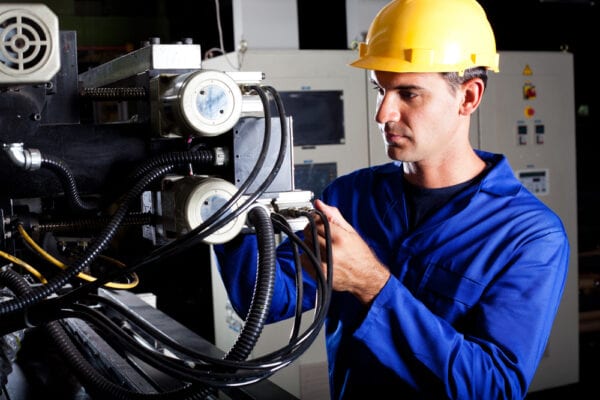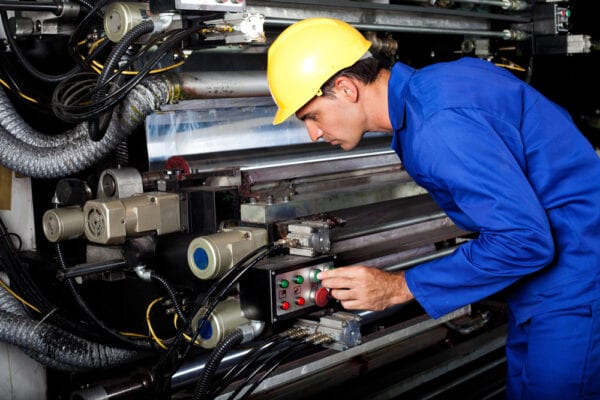
Equipment breakdowns are costly. In fact, in the automotive industry, a single minute of downtime can cost as much as $3,000,000 an hour! Not only do breakdowns take time and money to fix, but they bring production to a standstill, forcing workers to stop what they’re doing until assets can be returned to service. That’s why troubleshooting is one of the most important skills a maintenance professional can have.
What is Troubleshooting?
Troubleshooting is a systematic problem-solving approach used to identify asset failures and corrects faults to return assets to working order. Based on the symptoms of a malfunction or failure, technicians can follow a set of steps to determine or resolve the problem. Troubleshooting is very closely related to Root Cause Analysis (RCA), although RCA is typically conducted when a more formal approach is needed to assess failures.
Why Troubleshooting Matters in Maintenance
Properly maintained equipment is integral to the function of any organization. As much as maintenance teams try to reduce unplanned downtime, it is impossible to completely eliminate it. Even with a comprehensive preventive maintenance program in place, some asset failures simply cannot be avoided. When unexpected failures do happen, the maintenance team must address problems quickly.
However, troubleshooting experience can only be gained when assets break down. So how can maintenance personnel hone their skills without causing excessive downtime? While there is no substitute for experience, using a computerized maintenance management system (CMMS) accelerates the troubleshooting process by making it easier for maintenance personnel to access the information necessary to quickly identify the cause of failures and how to fix them.
The next section describes how CMMS can be used at each stage of the troubleshooting process.
Troubleshooting with a CMMS
Before actual troubleshooting can begin, the maintenance team must be made aware of the problem. Maintenance needs are typically reported via a phone call, email, text, or in person. Receiving requests through multiple channels means that requests are likely to get lost or misunderstood, and causes unnecessary complexity for maintenance staff.
Instead, it is preferable to use the maintenance request system included with CMMS solutions like FTMaintenance. A maintenance request system streamlines the request process by providing a single channel for managing and addressing incoming maintenance requests. It allows non-maintenance staff to use their mobile devices to submit work requests immediately and directly to the maintenance team using an online submission form.
Gathering Information

To effectively troubleshoot a problem, it is important to have as much relevant information as possible at your fingertips. Working with insufficient or inaccurate information can lead to the wrong conclusions, and delay a solution.
A technician needs to gather contextual information from multiple sources. The most obvious source of information is the operator who requested assistance. Operators and production staff are most familiar with the situation and can provide primary details including the indicators of the problem (such as a change in asset performance or product quality), how the problem was discovered, and the conditions that led to the problem.
A technician should also observe the problem first hand, noting any unusual symptoms or abnormal behavior. Failure codes displayed on human-machine interfaces (HMIs) or alarms from the production machine or control devices, like a PLC, can help identify what is going wrong.
The most comprehensive resource for technicians is a CMMS. A CMMS provides an efficient method for communication between those who report problems and the technicians who must resolve them. A complete maintenance history stored in a CMMS allows technicians to see similar past failures and view the history of problems and repairs leading up to the current breakdown.
Depending on the amount of information gathered, technicians may be able to do some troubleshooting before arriving on scene. A CMMS serves as a digital library of maintenance documentation, such as owner’s manuals, breakdown schematics, and maintenance troubleshooting guides. Information is accessed on demand so that no time is wasted rifling through file cabinets or tracking down hard copies of manuals.
Analyzing Information and Formulating a Solution
Enough information should be gathered at this point for a technician to have an idea of what may be causing the issue and to formulate a plan to fix the problem. If the problem has occurred before, the maintenance history can be used to identify what parts and tools were used in the past to complete a similar repair.
The CMMS then tells the technician if the necessary parts are in stock and where they can be found. If out of stock, the CMMS can be used to quickly access vendor contact information for ordering and generating purchase orders. Maintenance history will also outline the corrective steps taken on past repairs, helping the technician better prepare for the job.
Performing the Repair
Before the repair is started, the technician should be familiar with any safety rules and procedures for working on the asset. A CMMS provides technicians with crucial safety information, such as what safety gear is needed and what lockout/tagout procedures must be followed. Safety-related tasks can also be included directly on work orders. If specialized knowledge or skills are needed to complete the repair, the CMMS can also help identify which employees are best suited to lend a hand.
Once the asset is in a safe state, the repair can be completed. During a repair, a technician may discover additional issues that weren’t revealed earlier. In this case, more information gathering may be needed. Instead of going back to an office or computer terminal, the technician can access the CMMS using a mobile device. This puts maintenance information in the palm of the technician’s hand, saving time running back and forth. A mobile device can also be used to log any newly discovered information and upload multimedia files, such as pictures and videos, which can provide additional context to the situation.
Testing the Solution

Once the repair is completed, the technician or production team will verify the results. Typically, this is done at a reduced speed or with reduced output. If all goes well, the equipment can be run in full production mode. During this stage, the technician should continue to observe the asset. If the problem persists, another solution must be tried and tested. Any further interventions should be noted in the CMMS on work orders, in description areas, or through attached documentation.
Documenting the Solution
A critical troubleshooting step is documentation of the resources (i.e., labor, material, time) and steps used to resolve the problem. Detailed documentation creates a valuable reference for future troubleshooting if the same problem happens again. Documentation is done on the work order during – or shortly after – the repair is complete.
A good CMMS makes this process easy. A CMMS uses this information to build an asset’s maintenance history, where it is available for in-depth analysis and key performance indicator (KPI) reports.
Preventing Future Problems
Follow-up should be done once equipment is back up and running. Any recommendations made or precautions taken following a breakdown may prevent the failure from happening again – or at the very least, reduce the number of times it occurs.
CMMS software makes follow-up activities easy. For example, tweaks to a preventive maintenance (PM) schedule can be done in a matter of seconds. Changes to a work order’s tasks are automatically applied to future work orders. If new parts were used for a repair, or a new vendor supplied parts, they can be documented and tracked in the software. When it comes time to reorder, inventory and vendor records are available at a moment’s notice.
Improve Troubleshooting with FTMaintenance
Asset downtime is costly for manufacturers. The maintenance team’s ability to effectively troubleshoot breakdowns is critical for keeping production going. However, maintenance troubleshooting takes time to master. FTMaintenance facilitates effective troubleshooting by centralizing repair history and maintenance documentation, providing technicians with a single system from which they can quickly access the information they need to keep assets up and running. Schedule your demo today to learn more about how FTMaintenance can minimize your asset downtime.